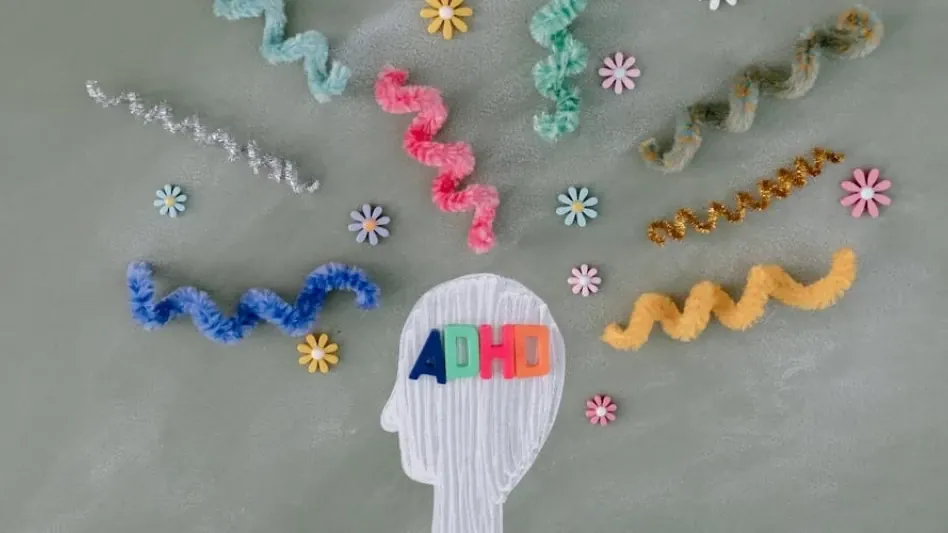Neurodevelopmental conditions such as ADHD and autism impact around 10% of children, affecting their development, behavior, and overall well-being. Despite significant prevalence, the support systems for these children and their caregivers are often inadequate. Many families struggle to access healthcare providers and face long wait times for essential services. Given these challenges, it’s crucial to explore innovative solutions that can bridge the support gap and improve the quality of life for these children and their families.
Digital tools, including apps and websites, have been proposed as potential solutions to these challenges, providing families with quick access to valuable information. However, the plethora of digital tools available makes it difficult for families to discern which ones are genuinely beneficial. A recent study aimed to evaluate freely available digital resources for child neurodevelopment and mental health, focusing specifically on their quality and evidence base. The findings highlighted the need for rigorous evaluation and emphasized the importance of creating reliable and effective digital resources.
The Scope of Digital Resources
Availability and Variety of Tools
To understand the landscape of digital tools available for children with ADHD and autism, researchers identified 3,435 digital resources, of which 112 (43 apps and 69 websites) met the criteria for review. These resources claimed to offer information or support related to child neurodevelopment, mental health, or overall well-being. To qualify for the study, the resources had to be freely accessible, in English, and provide actionable information beneficial for children and their families. Autism emerged as the most common focus, accounting for 17% of the resources evaluated.
The content of these resources often included strategies to promote speech, language, and social development and to manage challenging behaviors. Other significant areas of focus included language and communication, which covered 14% of the resources, and ADHD, which accounted for 10%. These resources demonstrated a proactive approach to addressing specific aspects of neurodevelopment through various types of support offered to both children and their caregivers.
Types of Support Offered
The digital tools reviewed varied widely in their purpose and functionality. Among them, certain apps were designed for journaling and providing practical advice, while others focused on scheduling support and delivering activities and strategies specifically tailored for parents. Some interactive apps offered structured modules to present information in an engaging manner, enabling users to learn through guided steps. Meanwhile, other tools provided alternative and assistive communication options, which were particularly beneficial for children facing significant language or communication challenges.
Overall, these resources aimed to address the diverse needs of children with neurodevelopmental conditions by providing practical solutions to everyday challenges. The variety in the type of support offered reflects the multifaceted nature of these conditions and the corresponding need for versatile tools to cater to different aspects of development and well-being. Despite the diverse offerings, a common thread across these resources was the goal of enabling children to achieve better developmental outcomes through consistent and structured support.
Evaluating Engagement and Accessibility
Usability and Aesthetics
A crucial aspect of the study was evaluating the engagement and accessibility of the digital resources, as tools that are difficult to use often go underutilized regardless of their information quality. The study assessed several aspects of usability, including the resources’ navigability, stylistic consistency, and the presence of appealing graphics. Positive engagement metrics indicated that many of these resources excelled in creating an inviting and user-friendly interface that could encourage regular use.
Usability also plays a significant role in how effectively these resources can be integrated into daily routines. High ratings in usability suggest that these tools had an intuitive design, making it easier for children and their caregivers to interact with and benefit from them. Engaging graphics and consistent design elements helped maintain the users’ attention, thereby enhancing the overall user experience. Despite such achievements in usability, this alone does not determine the efficacy of a digital tool; the quality of information provided remains a critical factor in its overall value.
Information Quality and Evidence Base
While many digital tools scored well in terms of engagement and accessibility, the study noted a critical shortfall in the quality of the information provided. Specifically, 37% of the reviewed apps did not meet the minimum acceptable standards for information quality, rendering many of them non-recommendable. Websites generally performed better in this aspect, but both apps and websites shared a significant issue: a lack of substantial scientific evidence that would affirm their positive impact on families.
The lack of rigorous evaluation and evidence supporting these tools’ effectiveness indicates a gap between user expectations and actual outcomes. High download rates for certain apps did not necessarily correlate with frequent usage or tangible benefits, revealing that long-term engagement with these digital tools remains low. This situation reflects a broader issue in the field of digital health, where many tools are released without thorough evaluation, ultimately leading to unmet expectations and potential distrust among users.
Identifying High-Quality Digital Resources
Collaborations with Reputable Institutions
One key finding from the study was that digital resources developed in collaboration with reputable institutions often exhibited higher quality. Such collaborations with health organizations, universities, or government groups typically resulted in more reliable resources. An exemplary resource identified by the study was the Raising Children Network and its app, Raising Healthy Minds. These resources were co-developed with a university and a hospital, ensuring the involvement of qualified individuals in their creation.
The Raising Healthy Minds app provides comprehensive support for children’s health, development, and well-being. Notably, it includes specific sections dedicated to neurodevelopmental needs, offering targeted strategies and interventions for children with autism and ADHD. By leveraging the expertise and credibility of partnering institutions, these resources can offer families high-quality information they can trust. The study’s findings underscore the significant role that collaborations with credible organizations play in enhancing the reliability and effectiveness of digital tools.
Criteria for Assessing Digital Resources
Parents and caregivers can benefit from understanding how to assess digital resources effectively. To determine factual accuracy, it is essential to check the qualifications and training of information providers; ideally, the author should be a registered health expert accountable to a regulatory body. Consistency of information can be verified by cross-checking the content against multiple credible sources, such as reputable health institutions.
Parents should also look for supporting information, including reliable links to reputable institutions and peer-reviewed scientific journals. These sources not only lend credibility but also often disclose any research limitations, helping users make more informed decisions. Additionally, ensuring that the information is up-to-date is crucial, as resources should be frequently updated. Users can typically find update dates on the homepage or at the bottom of webpages, indicating the currency of the content provided.
Red Flags and Limitations
Warning Signs to Watch For
Despite the potential benefits, there are certain red flags that parents and caregivers should watch out for when evaluating digital resources. Testimonials and anecdotes without supporting evidence can be misleading and should be approached with caution. The absence of information regarding conflicts of interest or the presence of overly optimistic claims can also be indicative of a lack of credibility. It’s important to remember that star ratings for apps do not always guarantee factual or helpful content, and thorough evaluation is necessary to avoid being misled by superficial ratings.
Awareness of these warning signs can help families navigate the plethora of digital resources available and select those that are genuinely beneficial. Being discerning about the content and its sources can prevent reliance on tools that may not deliver the promised outcomes. By emphasizing evidence-based resources, families can better support their children’s developmental needs and enhance the overall effectiveness of the tools they choose to use.
The Role of Digital Tools in Healthcare
While digital tools are unlikely to replace healthcare professionals, they can play a significant supportive role within the broader healthcare system. These tools can help educate and prepare families for meetings with health providers, making these interactions more productive. Additionally, digital tools can facilitate collaborative efforts between families and healthcare providers, improving the overall continuum of care. For instance, tracking sleep behavior using actigraphy can provide valuable data to support clinical care and better inform treatment plans.
Moreover, emerging advancements in artificial intelligence hold the promise of new ways to support daily living for children with neurodevelopmental conditions. AI-driven tools could offer personalized interventions and real-time feedback, enhancing the utility and effectiveness of digital resources. As technology continues to evolve, it is essential to prioritize the rigorous evaluation of these tools to ensure they meet the necessary standards and genuinely benefit the users.
Conclusion
Neurodevelopmental conditions like ADHD and autism affect about 10% of children, impacting their growth, behavior, and overall well-being. Despite the high prevalence, support systems for these children and their caregivers are often lacking. Many families face challenges accessing healthcare providers and endure long wait times for necessary services. Given these issues, it’s crucial to explore innovative solutions that can fill the support gap and enhance the quality of life for these children and their families.
Digital tools such as apps and websites have been suggested as potential solutions to these challenges, offering families quick access to valuable information. However, the vast number of available digital tools makes it difficult for families to determine which ones are truly beneficial. A recent study aimed to evaluate free digital resources for child neurodevelopment and mental health, focusing on their quality and evidence basis. The findings underscored the need for rigorous evaluation and stressed the importance of creating reliable and effective digital resources to support these families adequately.









